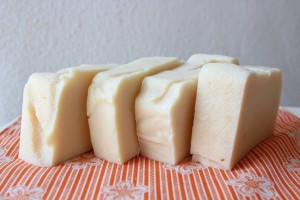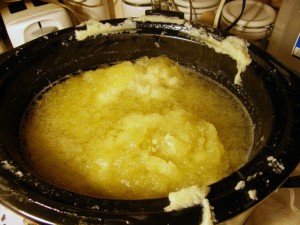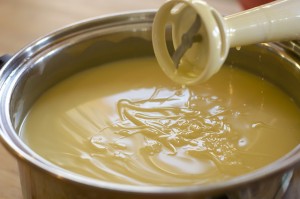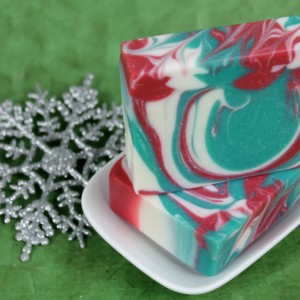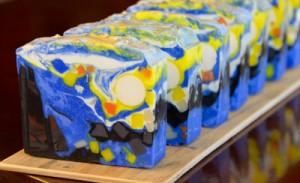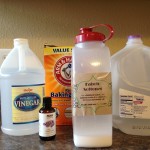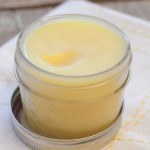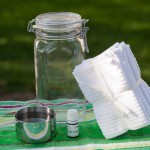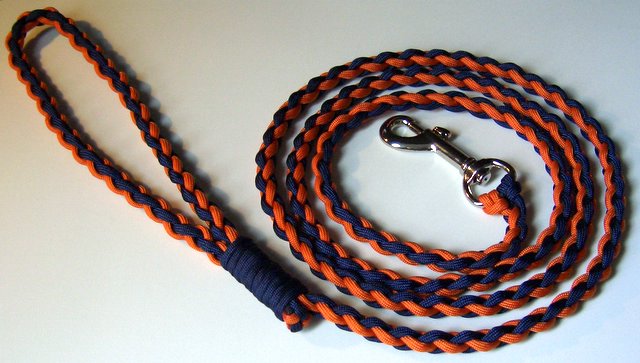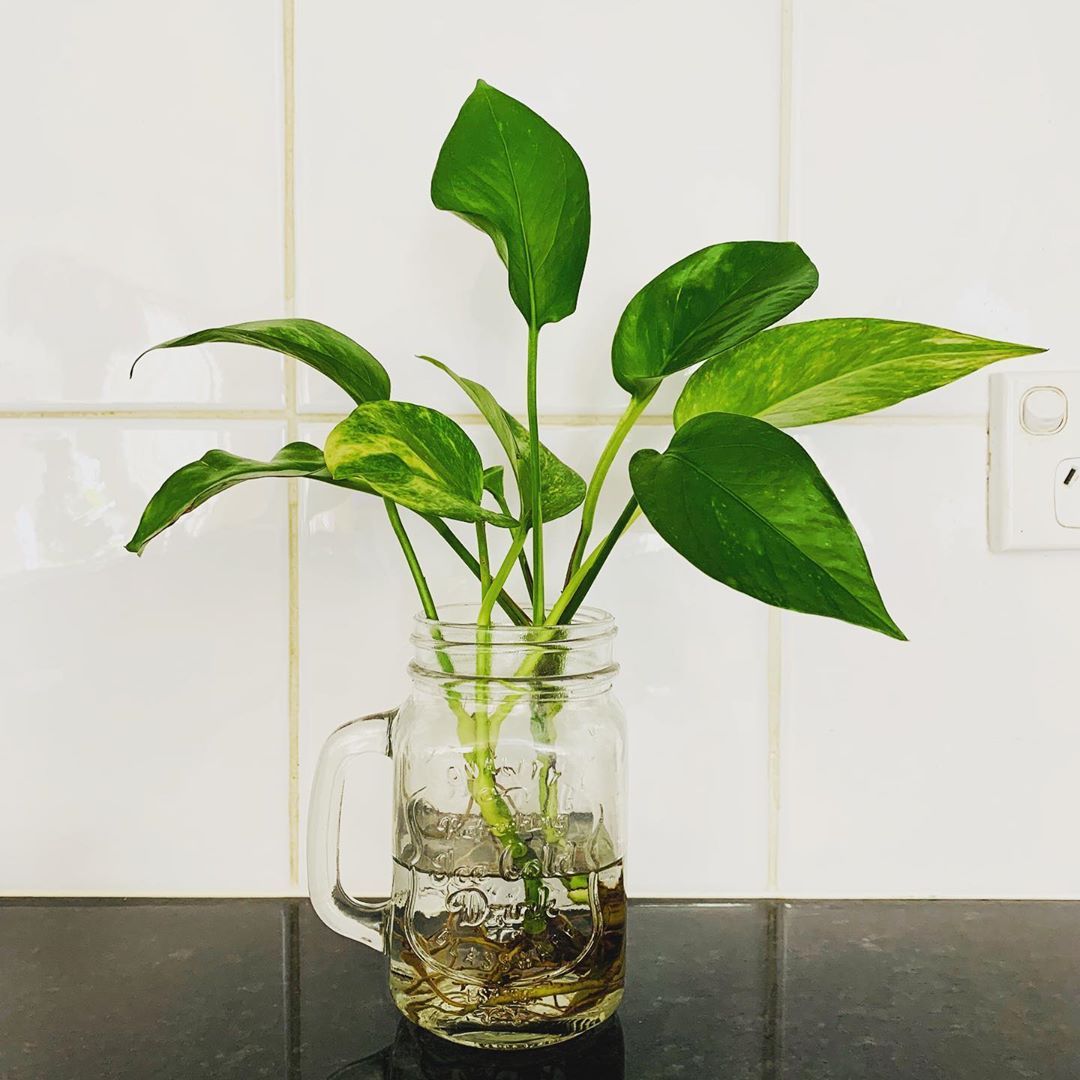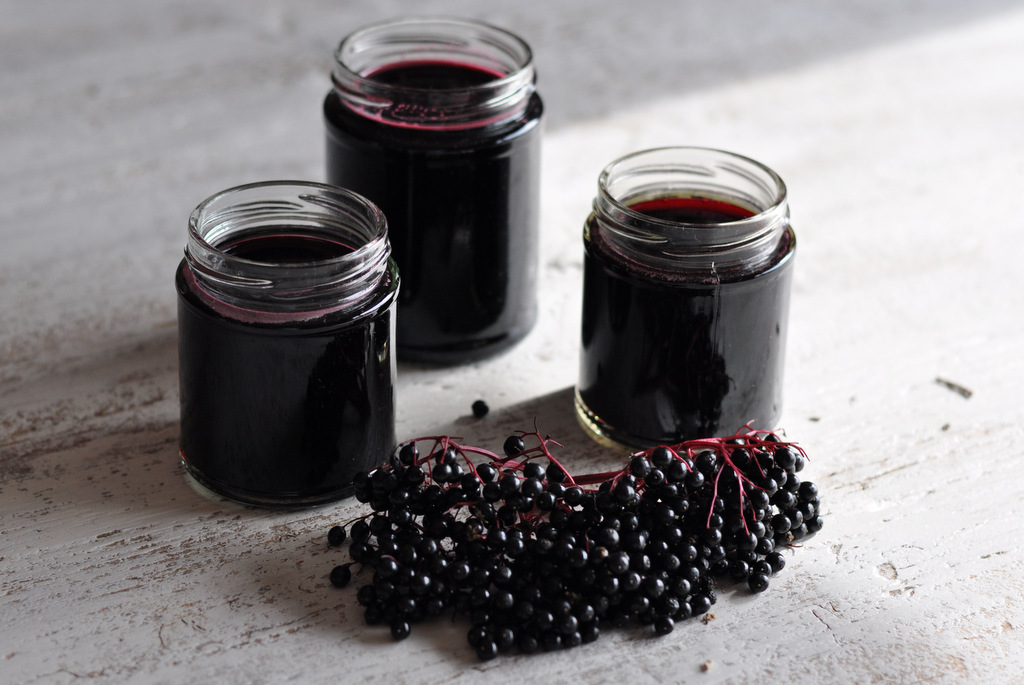Hot Process Soap Making Using Crock-Pot Recipe
Published on February 2nd 2016 by Papiya Dutta under DIY
Making hot process soap is easy, needing much less curing time compared to cold process soaps. The fact that you can add your favorite oils, butters and scents makes the simple DIY all the more irresistible. Read on to know the methods and arm yourself with handy tips and ideas.
How to make hot process soap in a crock-pot
Supplies
For 30 oz of soap, you will need the following ingredients.
- 10 oz olive oil
- 20 oz coconut oil
- 4.78 oz 100% pure lye
- 9 oz distilled water
- 50 drops essential oils or fragrance oils for scent (optional)
- Additives of your choice like dried herbs, honey, ground oatmeal, or coffee grounds (optional)
- Natural colorants (optional)
Equipment you will need: Stick blender, crock-pot, digital measuring scale, non-metallic utensils, molds, and safety gear such as gloves, long sleeves, safety glasses, etc.
Step-by-step Instructions
- Put the coconut oil in the crock-pot. Turn on the heat and allow the oil to melt.
- Once it has melted completely, add the olive oil, allow it to mix and warm up.
- Take the water in another container and add the lye to it, while stirring continuously. Make sure to do this in a place with ample ventilation, with your safety gear on. The chemical reaction will be rapid, emanating fumes, causing the container to get very hot.
- When the lye gets dissolved completely, slowly add the resulting mixture to the liquids in the crock-pot. Keep stirring the whole time.
- Now use the stick blender to mix and stir the ingredients nicely, taking care not to splash. Instead of running the blender constantly, pulse it for short time spans. You will know it has achieved trace when it attains the consistency of pudding. It should maintain its shape when you plop some at the top.
- Put the lid on the crock-pot and allow the concoction to cook on low for 50 minutes.
- While it cooks, ensure that the soap mix does not bubble over by giving it a quick stir whenever it tries to rise above the edges of the crock-pot. When you are 15 minutes into the slow cooking, it reaches a stage that should remind you of apple sauce.
- Those who are using non-silicone molds can utilize this time by lining their molds with parchment paper.
- Test whether the lye has completely blended with the oils by touching a bit of it to your tongue (make sure to cool it first). If it zaps you, then you need to cook it for longer. If it tastes like soap, proceed to the next step. The consistency resembles that of mashed potatoes. If you find it to be too dry, add some water or oils lest your soap becomes crumbly.
- Turn the crock-pot off, allow 2 minutes of cooling time before mixing the essential oils, colors or dyes and additives (if using any). You can’t afford to wait too long as the concoction begins to lose its consistency.
- Scoop the soap blend into the molds, pressing in tightly and smoothening up the tops. You can also form soap balls if there is any leftover.
- Let it sit for 12-24 hours until it sets completely.
- Remove the soaps from the molds. If you are using one big mold, use a knife to cut the soap into bars. They can be used right away.
- Though hot process soaps are ready to use, allowing them to cure for a day or better still, a few weeks hardens them and increases durability. The longer the sitting time, the milder the soap.
The simple recipe mentioned above is suitable for vegans. In case you are not comfortable with lye, just grate around 2 bars of any natural soap using a cheese grater or food processor, sprinkle 1-2 ounces water over it, heat in a crock-pot with constant stirring until it becomes a somewhat lumpy translucent liquid. Stir some more to attain the desired consistency before placing in molds.
Alternative tips and ideas for the recipe
- If you want to make hot process castile soap, give the coconut oil a miss. Use only 30 oz of 100% olive oil.
- You can play around with different portions of oils in the recipe. Just ensure that you run the final quantities through a lye calculator to ensure that you are using a safe amount of lye.
- You can substitute water with goat milk, buttermilk or yogurt for an extra-rich soap laden with skin-nourishing effects. First freeze the milk or yogurt and line the molds with freezer paper. Instead of adding the lye to water as mentioned in step 3, transfer the milk to a container and sprinkle the lye on top. Stir to mix until the heat of the lye melts the chunks of milk. Everything else remains the same.
- Instead of a crock-pot, you can heat the soap mixture in on low flame over a stove.
- You can also use a double boiler, where you half fill the bigger pot with water, bring to boil and then to simmer before using the smaller pot for heating the oils and later the lye solution.
- If you are using a microwave, put it on a low power mode, stopping it every two minutes to check the mixture for the desired consistency.
- While using an oven, preheat it to 170°, put in the soap mixture and check after 15 minutes.
- You can substitute water with green tea for preventing skin tan.
- To make the soap suitable for babies, substitute essential oils with herb infused oils.
How to keep your hot process soap in a liquid form
If you want to make liquid soap, a little modification is needed in the above recipe.
- Bring 40 ounces of distilled water to boil in a lidded container.
- Add the soap paste (obtained in step 9) and stir to incorporate well.
- Turn off the heat, put on the lid and wait for an hour. On stirring it if you find it lumpy, let it sit some more.
- Once it is smooth, add 2 oz borax and boiling water solution (ratio 1:2) to the mixture, ½ ounce at a time.
- Add the scents, colors and additives before putting the soap to rest in a large jar for a week.
You can use it as dish soap, body or hand wash. To turn it into a dog soap, add a tbsp of lemon juice before use.
Additives for extra skin nourishing properties
- Beer for healthy skin: To get smooth, supple skin, boil dark beer for 5-10 minutes to drive out the alcohol. Then you can mix it with the distilled water in the ratio 2:1 to dissolve the lye. Let it cool to room temperature before mixing with the oils.
- Deep conditioning soap: For extra conditioning, consider mixing 1.95 oz of canned pumpkin when the blend achieves light trace. Then use the stick blender to obtain a thick trace.
- Homemade soap to help eczema: You can add around 6 oz of lard, shea butter or shortening like Crisco with the oils for a mild, conditioning soap. Note that glycerin is formed when the lye reacts with the fats providing skin moisturizing. This makes it suitable for people suffering from eczema.
- Fight acne with your soap: Including 1 oz tea tree and 0.5 oz orange essential oils is advantageous for acne-prone skin.
- Make it an antibacterial: You can include 0.5 oz beeswax to the oils for added anti-bacterial properties. It also makes the mixture trace quickly.
Adding the yolk of a large egg to 2 oz of melted oils (after sufficiently cooling them), and mixing nicely before adding to the cooled trace makes excellent shampoo bars.
Customizing your crock-pot soap with scents and embeds
- Try the recipe with scents like vanilla, lavender or peppermint for refreshing hostess gifts.
- Make your soaps vibrant by creating pretty swirls while adding colors. Overlap a few tints for a new look.
- Try making innovative soap embeds using different shapes of molds. Later you can insert them into another fresh batch of hot process soap for giving them a fab look.
- To make soaps in cupcake designs, scoop out the mixture onto double cupcake papers placed in each slot of a muffin pan, instead of the molds. Once they cool, remove the cupcakes from the pan. You can whip the oils to use them as frosting.
Now that you know the basic directions and have ample tricks up your sleeve, you are sure to rock it in the shower. You friends will love the organic gifts as they shower you with the choicest compliments.
Popular
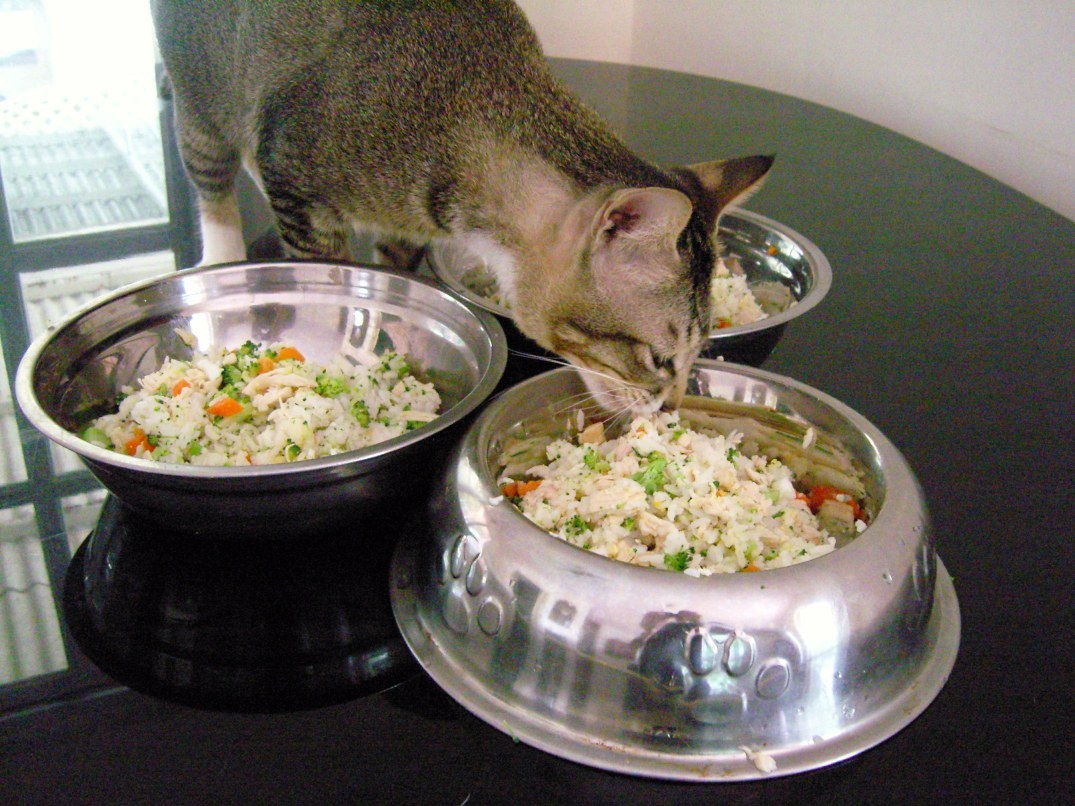 DIY: Healthy Homemade Cat Food Recipes
DIY: Healthy Homemade Cat Food Recipes
Give occasional treats to your loving pet cat with the best nutritious homemade dishes, rather […]
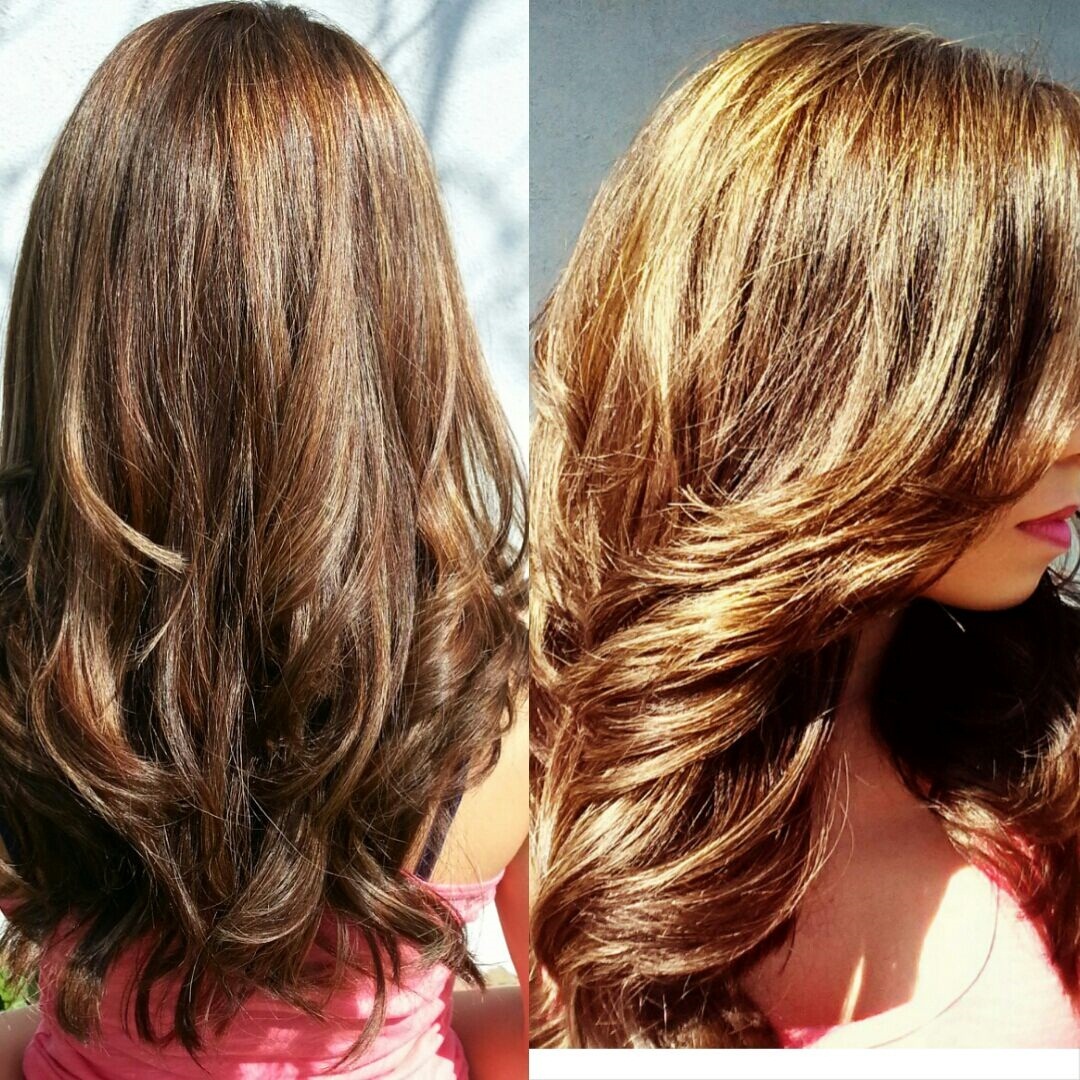 How to Lighten Hair Naturally
How to Lighten Hair Naturally
Best homemade recipes for making your own natural hair lighteners! Try making your own hair […]
 9 Best Homemade Natural Mouthwash Recipes
9 Best Homemade Natural Mouthwash Recipes
Smile more; talk more to your friends confidently trying these mouthwash recipes! Bad breath is […]
Prepare your own tooth powder at home for healthy gums and teeth. The recipes given […]
As the name suggests, wool dryer balls serve the same purpose as plastic PVC or […]

